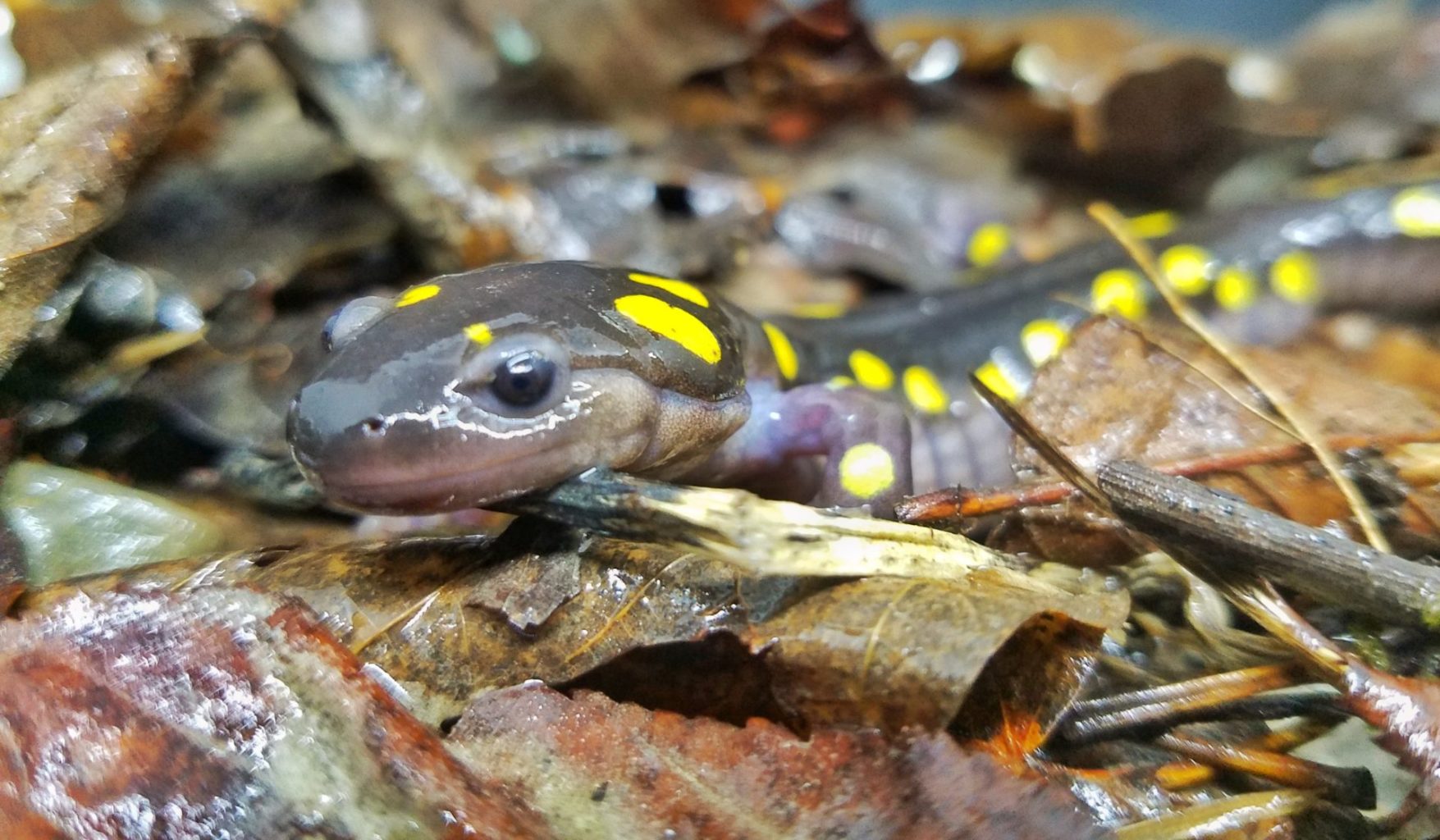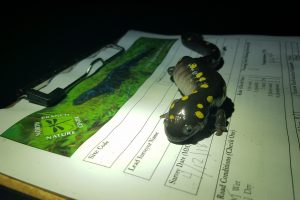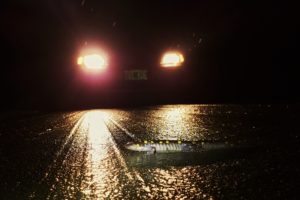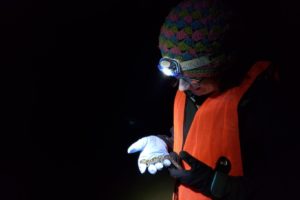The NBNC Amphibian Road Crossing Program

Why did the salamander cross the road? To get to the vernal pool! For thousands of years, amphibians have migrated from their upland wintering habitats to lowland wetlands to breed every spring. After wintering deep underground or in a frozen state of torpor, amphibians emerge on warm, wet nights in early spring to begin their march to breeding grounds, often crossing our busy roadways at great peril. Since NBNC began monitoring road crossings in 2005, volunteer crossing guards have helped save thousands of amphibians while providing important information to conservation science and natural resource planners.
How it works
- Volunteers visit known or suspected amphibian migration sites on warm, rainy nights in March-May.
- Volunteers record weather, species, and amphibian data while escorting amphibians across the road.
- The data is used by NBNC and partners to understand amphibian movement and conservation in our communities.
How to Get Started
All the resources needed to participate in this project are right here on this page!
- Check out our Volunteer Manual and Protocols
- Watch our ARC Training Videos (see sidebar).
- Join our Amphibian Crossing Guard mailing list for updates.
- Pick a survey site, and go help our amphibians!
Returning Volunteers
We make small but important changes to the protocols each year. Please be sure to read the updated manual before you start your surveys this year.
- Be extremely cautious of traffic. Wear bright, reflective clothing. Use bright flashlights. Step far off the roadway as soon as you see headlights, and watch for traffic constantly.
- Do not shine your flashlight at oncoming vehicles. Instead, step far off the road and use your flashlight to illuminate yourself.
- Wash your hands before touching amphibians, and only handle animals that aren't moving off the roadway on their own.
ARC Volunteer FAQs
Our volunteers live at very different elevations and locations around the state, so the best forecast will be one you make on your own. Remember this mantra: amphibians move when it is above 40 degrees, raining, dark, and between March and early May. If those factors aren't all met, chances of amphibian movement are slim (but not impossible).
Yes! Yes! Yes! This is actually extremely important, as it tells us whether prospective sites are active or inactive, and how many volunteers are participating.
No! Each survey is a one-way transect, so each team should be submitting at least two surveys: one for the way out, and one for the way back. You're welcome to do as many passes as you'd like, but please do not submit data from multiple surveys on the same form.
Ideally, no. All dead amphibians should be moved off the road so they aren't counted twice. Any amphibian that isn't moving itself off the roadway should be moved. This saves them from car tires, and prevents double-counting.
Any amphibian you're not sure of, you can take a photo and submit it to our Photo Submission Portal on this website. Make a note in the "additional comments" section of the data form.
No. In previous years, we've requested that volunteers "adopt" a crossing site. We've since decided that it is much easier and fun for everyone to visit whatever site they'd like.
More About the Amphibian Road Crossing Project
The data submitted by our volunteers supports the work of our partners at the Vermont Reptile & Amphibian Atlas, the Vermont Agency of Transportation, and the Vermont Center for Ecostudies. Our findings are also made available to city and town planners and conservation commissions to aid in transportation planning at the local level. As ARC grows, we are cultivating conversations with other amphibian conservation organizations to unify methodologies and expand the regional relevance of all local amphibian conservation work.
Other Ways to Help Amphibians
NBNC works with volunteers to protect Vermont amphibians in other ways:
Informational Community Trainings: NBNC gives amphibian ecology presentations and road rescue trainings in the form of evening workshops via Zoom or indoors. Since 2005, NBNC has offered these programs in over 50 locations across Vermont and has trained over 400 residents in amphibian identification, data collection, and rescue protocols. NBNC also offers “pop-up” public programs at known crossing sites to train volunteers and welcome visitors in the field. Email us to set up a training.
Vernal Pool Monitoring: NBNC partners with the Vermont Center for Ecostudies to identify and monitor vernal pools (ephemeral wetlands that are critical breeding and nursery grounds to many amphibian species). These remote sites require regular spring monitoring by dedicated volunteers. NBNC seeks volunteers, students, and teachers to participate in the VCE Vernal Pool Monitoring Program.
ARC Volunteer Resources
ARC Training Videos
"Knowing that you love the earth changes you, activates you to defend and protect and celebrate.
But when you feel that the earth loves you in return, that feeling transforms the relationship
from a one-way street into a sacred bond."
— Robin Wall Kimmerer, Braiding Sweetgrass
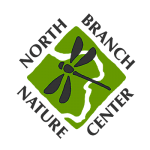
713 Elm Street
Montpelier, Vermont 05602
(802) 229-6206
Hours: Center Open Monday-Friday 9-4
Trails Open 24/7

